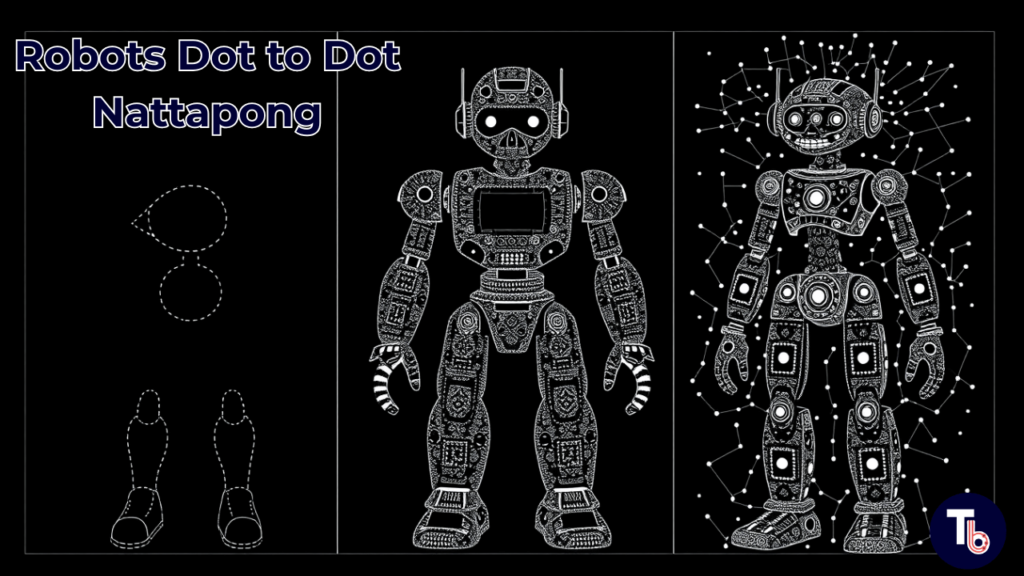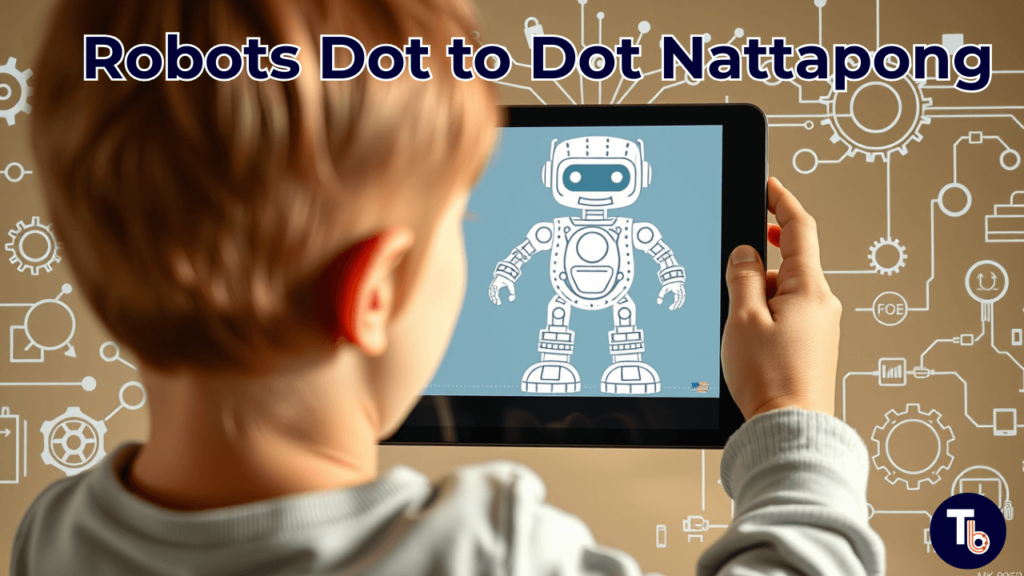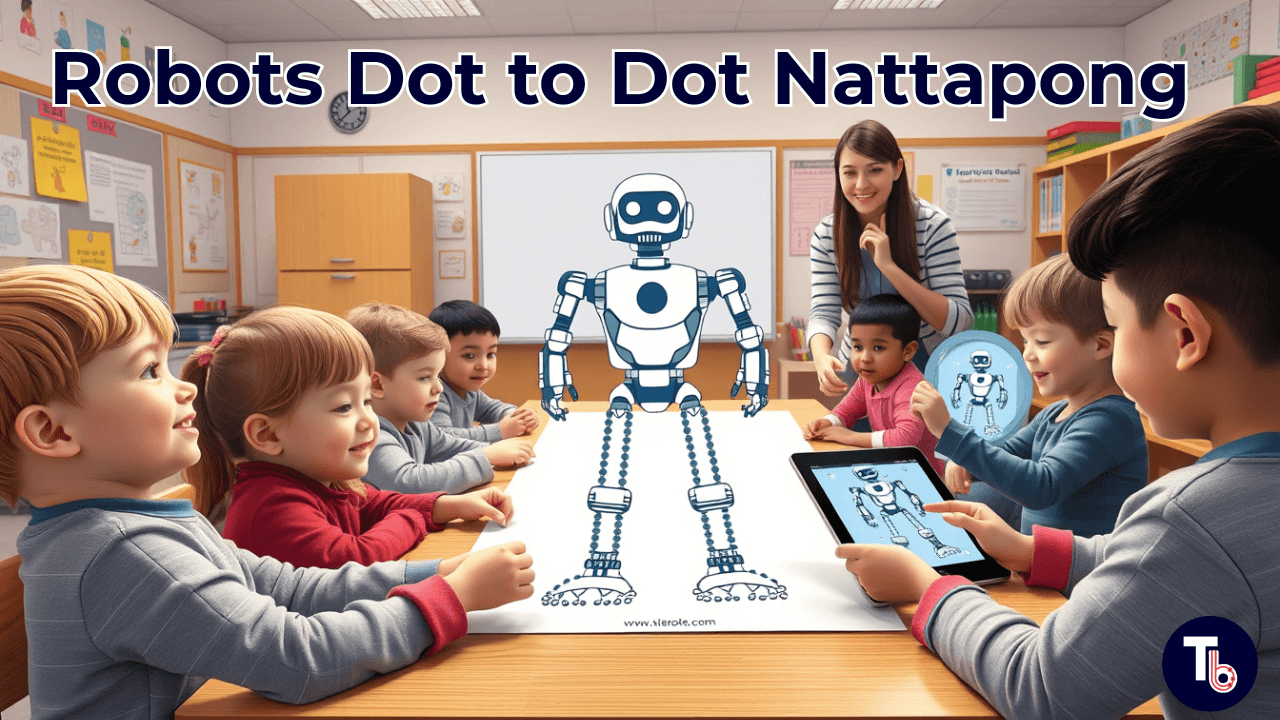Let’s talk about something that’s not only lighting up the world of education but also turning young minds into curious problem solvers—Robots Dot to Dot Nattapong. Sounds playful, right? It is, but don’t let the playful name fool you. This is a smart, interactive learning system crafted to teach robotics in a way that even a total beginner can love.
We’re stepping into a space where art meets tech—where those simple dot-to-dot puzzles you loved as a kid now have a new mission: to make robotics education less intimidating and way more engaging.
What is Robots Dot to Dot Nattapong, and Why Is Everyone Talking About It?
At its core, Robots Dot to Dot Nattapong is the brainchild of an educator and robotics enthusiast, Nattapong, who believes in making robotics simple and approachable. The concept takes the nostalgic joy of connecting dots and fuses it with modern robotic learning—offering kids and newcomers a creative, hands-on way to build knowledge in science, technology, engineering, and math (STEM).
Imagine building the foundation of your knowledge on robotics—literally—by connecting one dot to the next. It’s more than just a game; it’s a learning experience crafted for discovery.
Inside the Learning Experience

Dot-to-Dot with a Twist of Tech
The idea of using a “connect-the-dots” format isn’t new, but Nattapong gives it an entirely fresh twist. Instead of revealing animals or cartoons, these puzzles gradually reveal the structure of a robot. And in doing so, learners begin to understand shapes, design principles, and basic robotic construction in a very visual and tangible way.
A New Age of Playful Education
Dot-to-dot activities have long been used in early childhood education to build hand-eye coordination and counting skills. Now, throw in some robotics templates and you’re teaching kids how real-world machines work while they have fun. It’s smart. It’s effective. And yes, it’s fun too.
How Does Robots Dot to Dot Nattapong Actually Work?
Let’s break it down:
1. The Dot-to-Dot Puzzle Interface
Here’s where it all begins. Users connect dots in sequential order—just like the childhood pastime—but instead of cartoon animals, they’re crafting the basic skeleton of a robot. It’s surprisingly satisfying and gives a great visual structure to begin understanding robotic form and function.
2. Boosting Visual and Cognitive Engagement
As learners connect the dots and complete the shape of a robot, it sparks creativity. They begin asking themselves: Why does this piece go here? or What function could this part serve? The whole process encourages critical thinking without overwhelming complexity.
3. Levels for All Skill Sets
This platform isn’t just for kids. It caters to a spectrum of skill levels—from absolute beginners to those looking for a challenge. Whether you’re five or fifty, there’s a dot pattern waiting for you.
4. Learning Through Industry-Themed Robots
Some templates mimic actual robots used in real industries—think agriculture bots, surgical robots, or factory arms. This gives learners insight into how robotics functions in the real world while keeping the activity approachable.
5. Kits That Go Beyond Paper
The learning doesn’t stop at puzzles. Each kit comes with detailed books, videos, and interactive workshops. Whether you’re a teacher setting up a classroom activity or a parent homeschooling your child, these kits provide a complete educational framework.
Different Categories for Every Kind of Learner

Let’s say you’re curious about what’s inside these dot-to-dot experiences. Good news: there’s something for everyone.
Beginner Robots
These are the starting points. With simple patterns and fewer dots, they’re perfect for children or those who’ve never touched a robot design before.
Advanced Robots
Ready to up your game? These versions come with intricate designs and higher difficulty levels. They challenge spatial awareness and demand more focused attention.
Educational Robots
This category is tailor-made for classroom learning. It blends creativity with STEM objectives, helping teachers connect the dots—literally—between fun and formal education.
Interactive Digital Robots
Some kits take things digital, featuring AR-compatible content. You scan your puzzle, and boom—a robot pops up on your screen in 3D. That’s next-level interactivity right there.
Pros and Cons: Is Robots Dot to Dot Nattapong Worth It?
Like any tech solution, it has its highs and a few lows. Let’s take a look.
✅ Advantages
- Fun + Functional – Learning robotics isn’t easy, but this platform makes it feel like play.
- Beginner-Friendly – With templates for all levels, it’s easy to jump in without prior experience.
- Encourages Creativity – Learners don’t just copy—they start imagining new designs.
- Great for Schools and Home Learning – Teachers and parents love the built-in curriculum support.
- Cost-Efficient – Compared to other robotics kits, this platform is budget-friendly and resource-conscious.
❌ Disadvantages
- Shallow Technical Depth – Advanced learners might find it too basic and need to supplement with deeper technical platforms.
- No Real Robot Building – Unlike LEGO Mindstorms or Arduino, you’re not assembling functional robots—just visualizing them.
- Too Simple for Some – Experienced robotics fans may find the concept too elementary.
- Job Displacement Concerns – Like all robotics conversations, there’s that lingering fear of automation replacing jobs, though not a fault of the system itself.
What’s Next for Robots Dot to Dot Nattapong?
This is more than just a cool idea—it’s a glimpse into how future generations might learn tech.
Trends to Watch:
- Machine Learning – There’s talk of integrating ML to let robots learn from patterns and improve their behavior.
- Personal Robotics – These kits could evolve into platforms for creating home assistant robots.
- Collaborative Robotics – Teaching kids not just how robots work, but how to work with them.
- Sensor Upgrades – Improving robot interaction with humans using better sensors and environmental awareness.
Getting Started: A Guide for New Users
So you’re ready to jump in. Here’s what to expect:
- Setup – Follow instructions to lay out your robot-building materials.
- Configuration – Adjust any app or AR settings to sync with your kit.
- Basic Controls – Learn how to navigate the puzzles and read the guidebooks.
- Advanced Features – Try integrating optional apps for added features or custom builds.
- Maintenance & Support – Use the support material for troubleshooting or help organizing workshops.
FAQs About Robots Dot to Dot Nattapong
Q: Who is this for?
A: Everyone—from young learners to curious adults. If you’ve got an interest in tech, you’re welcome here.
Q: What skills will I build?
A: Think coordination, pattern recognition, problem-solving, sequencing, and even design fundamentals.
Q: Do I need prior experience?
A: Nope. This system is built to guide you from zero knowledge to confident beginner in no time.
Stay updated with ScoopUpdates .com: Changing the Way We Consume News—One Smart Story at a Time for intelligent, modern storytelling.



